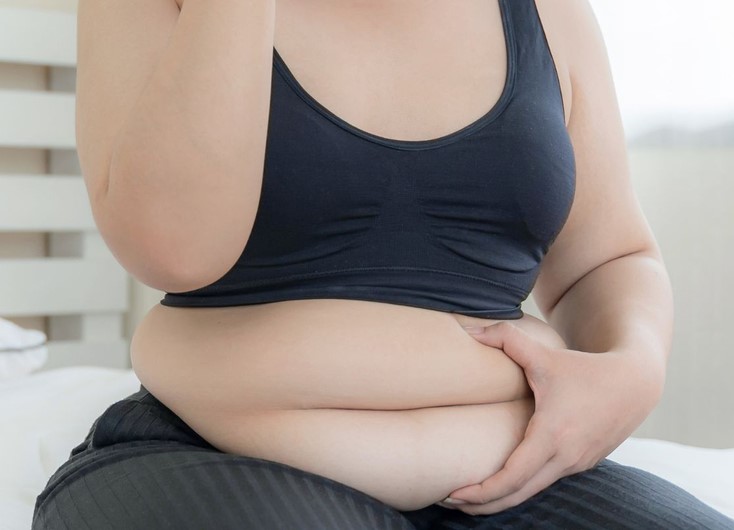Section 1: Understanding Lower Belly Fat
What is Lower Belly Fat?
Lower belly fat is the accumulation of fat around the abdominal area, especially below the navel. This fat can be both superficial, lying just under the skin, or deeper, around vital organs.
Difference between Visceral Fat and Subcutaneous Fat
Visceral fat surrounds internal organs and is linked to various health risks, including heart disease, diabetes, and metabolic syndrome. Subcutaneous fat lies just beneath the skin and is less harmful but still challenging to lose.
Health Risks Associated with Lower Belly Fat
Excess lower belly fat can increase the risk of cardiovascular diseases, Type 2 diabetes, and other metabolic disorders. The more visceral fat one has, the higher the health risks, making fat reduction a priority for better health.
Why is Lower Belly Fat Hard to Lose?
Various factors contribute to the stubborn nature of lower belly fat, including:
- Genetic Factors: Genetics can predispose individuals to store fat in certain areas, making the lower abdomen a “trouble spot” for many.
- Unhealthy Diet: Diets high in sugars, refined carbs, and unhealthy fats contribute to abdominal fat gain and can make it difficult to lose.
- Sedentary Lifestyle: A lack of physical activity limits calorie expenditure and metabolism, often resulting in belly fat accumulation.
- Stress and Cortisol Hormones: Chronic stress leads to elevated cortisol levels, which can encourage fat storage around the abdomen.
- Age and Gender: With age, metabolism slows down, and hormonal shifts in both men and women can contribute to fat storage in the belly area.
- Other Contributing Factors: Poor sleep quality, certain medications, and hormonal imbalances can also influence fat storage around the abdomen.
Section 2: Effective Solutions for Lower Belly Fat Reduction

Diet Adjustments
Making healthier dietary choices is essential for reducing lower belly fat.
- Cut Down on Sugars and Refined Carbs: Reducing intake of sweets, sodas, and refined carbs can help lower insulin levels, which promotes fat loss.
- Increase Protein and Fiber Intake: High-protein foods and fiber-rich vegetables promote satiety, reducing cravings and helping in fat loss.
- Stay Hydrated: Drinking enough water supports metabolism and can reduce water retention in the body.
- Limit Sugary and Alcoholic Beverages: Avoiding sugary drinks and alcohol helps reduce calorie intake and prevents fat buildup in the belly.
Exercise Regimen
A well-rounded exercise program is crucial for belly fat reduction.
- Effective Cardio Workouts: Running, cycling, and HIIT (High-Intensity Interval Training) are excellent for burning calories and reducing overall body fat.
- Strength Training: Weightlifting and resistance exercises increase muscle mass, which helps boost metabolism and burns fat effectively.
- Yoga and Pilates: These exercises enhance core strength, flexibility, and balance, and help tone the abdominal area.
- Additional Physical Activities: Engaging in hobbies like hiking, dancing, or sports can increase daily activity levels and contribute to fat loss.
Lifestyle Improvements
Healthy lifestyle habits are essential to long-term success.
- Ensure Adequate Sleep: Quality sleep helps regulate hormones like cortisol and ghrelin, reducing hunger and stress-related cravings.
- Manage Stress: Practicing mindfulness, meditation, or breathing exercises can lower stress levels and reduce cortisol production.
- Maintain a Healthy Overall Weight: Focus on a healthy lifestyle rather than only targeting belly fat, as weight management is holistic.
Other Supporting Methods
- Massage: Regular massage can stimulate circulation and may reduce bloating and fluid retention.
- Heat Therapy: Applying heat pads or using sauna sessions can enhance circulation and may support fat reduction efforts.
- Aesthetic Procedures: For some, non-invasive procedures like CoolSculpting or radiofrequency treatments can assist in targeting stubborn fat areas.
Section 3: Important Considerations When Reducing Lower Belly Fat

- Consistency is Key: Sustainable changes to diet, exercise, and lifestyle are essential for lasting results.
- Consult Professionals: Nutritionists, trainers, and doctors can provide guidance tailored to individual needs.
- Avoid Quick-Fix Weight Loss Methods: Crash diets and extreme workouts often lead to temporary results and can harm health.
- Choose Appropriate Foods and Exercises: Personal preferences, physical capabilities, and goals should guide diet and exercise choices.
Section 4: Conclusion
Reducing lower belly fat requires a combination of healthy eating, regular exercise, and lifestyle adjustments. The journey may be challenging, but the results are worth the effort for both health and well-being. Remember that maintaining motivation and setting realistic goals is essential, and with a balanced approach, long-term success is achievable.
Adding infographics, success stories, and a Q&A section could enhance this guide by providing visual summaries and real-life inspiration. Empowering readers with knowledge and practical tips will support them in reaching their health goals, one step at a time.



